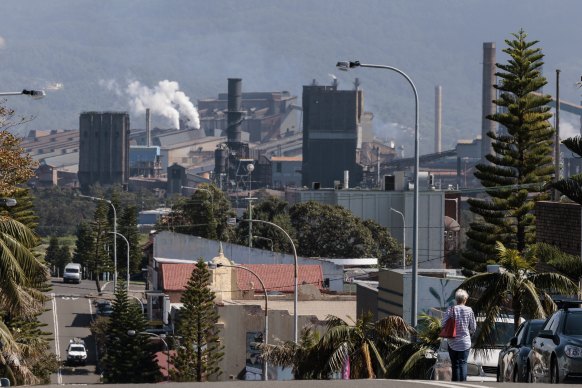By Matt Wade
Unemployment in Sydney has been higher than the rest of NSW for the past six months, reversing the pre-COVID trend for the metropolitan jobless rate to be lower than in regional NSW.
New jobs figures show unemployment in Greater Sydney was 3.7 per cent in March, in original terms, well above the rest of NSW on 3 per cent. It was the ninth time in the past 12 months the jobless rate in regional NSW has now been lower than or equal to the metropolitan rate.
Herald analysis of detailed labour force data published by the Bureau of Statistics shows that in the decade before the coronavirus pandemic hit in early 2020, Greater Sydney’s unemployment rate was rarely higher than in the rest of NSW.
In early 2015 unemployment outside the metropolitan area reached 8.5 per cent while in Greater Sydney the rate was only 5.8 per cent.
However, since the onset of COVID-19, Sydney’s unemployment rate has been consistently higher than the rest of the state.

Unemployment in Greater Sydney has been consistently higher than the rest of NSW since COVID-19Credit: Peter Rae
Terry Rawnsley, an urban economist at KPMG, said the economic effects of the COVID-19 pandemic, especially the long pause in overseas migration and an exodus from major cities, resulted in a scarcity of workers in regional NSW which has driven down unemployment rates.
“That means regional-level unemployment is now looking even better than in Greater Sydney, although they’ve both got very good numbers at the moment,” he said.
Rawnsley said job vacancies in regional NSW were double pre-COVID levels and the labour force participation rate, which measures the share of working-age people in employment or looking for employment, was at historic highs in many regions.
“People who were marginally attached to the jobs market, maybe waiting for the right job to come along, have been pulled into the labour force along with many who were unemployed,” he said.
“These regional economies have absorbed all the available local labour they can, and that’s why we have these very low unemployment rates.”
Bureau of Statistics figures on local region unemployment show many of the lowest rates in NSW last month were in regional areas including the Central West (2.2 per cent), Southern Highlands and Shoalhaven (2.3 per cent) and Illawarra (2.8 per cent).

Wentworth Street in Port Kembla. The Illawarra region had one of the state’s lowest unemployment rates in March.Credit: Brook Mitchell
AMP chief economist Dr Shane Oliver said strong demand in some key economic sectors of the NSW regional economy, such as tourism, was also helping to keep unemployment low.
“Businesses reliant on tourism in regional NSW have generally been seeing strong conditions,” he said. “People who want jobs in regional areas are finding them pretty easy to come across.”
Rawnsley said a shortage of housing in many regions was preventing new workers from moving in to take up available jobs, adding to the tight labour market conditions.
The highest local area unemployment rates in NSW last month were in Greater Sydney. This included Sydney’s southwest, which includes Liverpool, Cabramatta and Bingelly, at 5.2 per cent, Blacktown at 5.1 per cent and Parramatta at 4.8 per cent.
Monthly, region-level unemployment rates can be subject to variability due to small survey samples.
During the past year, the NSW labour market has been resilient in the face of high inflation, rising interest rates and a prolonged downturn in Sydney property prices.
But the latest employment figures showed NSW shed 23,000 jobs in March and the statewide unemployment rate rose a notch to 3.3 per cent, seasonally adjusted, which was the highest level in six months.
Oliver said the drop in employment suggests recent economic headwinds may be starting to take a toll, especially in Sydney.
“It’s possibly a sign that the NSW economy is starting to cool off,” he said.
A NSW budget update released before last month’s state election forecasted unemployment in the state to rise to 4.5 per cent next financial year.
Ross Gittins unpacks the economy in an exclusive subscriber-only newsletter every Tuesday evening. Sign up to receive it here.